- Home
- Stephen Hawking
Brief Answers to the Big Questions Page 5
Brief Answers to the Big Questions Read online
Page 5
Although the theorems Roger Penrose and I proved showed that the universe must have had a beginning, they did not give much information about the nature of that beginning. They indicated that the universe began in a Big Bang, a point where the whole universe and everything in it were scrunched up into a single point of infinite density, a space–time singularity. At this point Einstein’s general theory of relativity would have broken down. Thus one cannot use it to predict in what manner the universe began. One is left with the origin of the universe apparently being beyond the scope of science.
Observational evidence to confirm the idea that the universe had a very dense beginning came in October 1965, a few months after my first singularity result, with the discovery of a faint background of microwaves throughout space. These microwaves are the same as those in your microwave oven, but very much less powerful. They would heat your pizza only to minus 270.4 degrees centigrade (minus 518.72 degrees Fahrenheit), not much good for defrosting the pizza, let alone cooking it. You can actually observe these microwaves yourself. Those of you who remember analogue televisions have almost certainly observed these microwaves. If you ever set your television to an empty channel, a few per cent of the snow you saw on the screen was caused by this background of microwaves. The only reasonable interpretation of the background is that it is radiation left over from an early very hot and dense state. As the universe expanded, the radiation would have cooled until it is just the faint remnant we observe today.
That the universe began with a singularity was not an idea that I or a number of other people were happy with. The reason Einstein’s general relativity breaks down near the Big Bang is that it is what is called a classical theory. That is, it implicitly assumed what seems obvious from common sense, that each particle had a well-defined position and a well-defined speed. In such a so-called classical theory, if one knows the positions and speeds of all the particles in the universe at one time, one can calculate what they would be at any other time, in the past or future. However, in the early twentieth century scientists discovered that they couldn’t calculate exactly what would happen over very short distances. It wasn’t just that they needed better theories. There seems to be a certain level of randomness or uncertainty in nature that cannot be removed however good our theories. It can be summed up in the Uncertainty Principle that was proposed in 1927 by the German scientist Werner Heisenberg. One cannot accurately predict both the position and the speed of a particle. The more accurately the position is predicted, the less accurately you will be able to predict the speed, and vice versa.
Einstein objected strongly to the idea that the universe is governed by chance. His feelings were summed up in his dictum “God does not play dice.” But all the evidence is that God is quite a gambler. The universe is like a giant casino with dice being rolled, or wheels being spun, on every occasion. A casino owner risks losing money each time dice are thrown or the roulette wheel is spun. But over a large number of bets the odds average out, and the casino owner makes sure they average out in his or her favour. That’s why casino owners are so rich. The only chance you have of winning against them is to stake all your money on a few rolls of the dice or spins of the wheel.
It is the same with the universe. When the universe is big, there are a very large number of rolls of the dice, and the results average out to something one can predict. But when the universe is very small, near the Big Bang, there are only a small number of rolls of the dice, and the Uncertainty Principle is very important. In order to understand the origin of the universe, one therefore has to incorporate the Uncertainty Principle into Einstein’s general theory of relativity. This has been the great challenge in theoretical physics for at least the last thirty years. We haven’t solved it yet, but we have made a lot of progress.
Now suppose we try to predict the future. Because we only know some combination of position and speed of a particle, we cannot make precise predictions about the future positions and speeds of particles. We can only assign a probability to particular combinations of positions and speeds. Thus there is a certain probability to a particular future of the universe. But now suppose we try to understand the past in the same way.
Given the nature of the observations we can make now, all we can do is assign a probability to a particular history of the universe. Thus the universe must have many possible histories, each with its own probability. There is a history of the universe in which England win the World Cup again, though maybe the probability is low. This idea that the universe has multiple histories may sound like science fiction, but it is now accepted as science fact. It is due to Richard Feynman, who worked at the eminently respectable California Institute of Technology and played the bongo drums in a strip joint up the road. Feynman’s approach to understanding how things works is to assign to each possible history a particular probability, and then use this idea to make predictions. It works spectacularly well to predict the future. So we presume it works to retrodict the past too.
Scientists are now working to combine Einstein’s general theory of relativity and Feynman’s idea of multiple histories into a complete unified theory that will describe everything that happens in the universe. This unified theory will enable us to calculate how the universe will evolve, if we know its state at one time. But the unified theory will not in itself tell us how the universe began, or what its initial state was. For that, we need something extra. We require what are known as boundary conditions, things that tell us what happens at the frontiers of the universe, the edges of space and time. But if the frontier of the universe was just at a normal point of space and time we could go past it and claim the territory beyond as part of the universe. On the other hand, if the boundary of the universe was at a jagged edge where space or time were scrunched up, and the density was infinite, it would be very difficult to define meaningful boundary conditions. So it is not clear what boundary conditions are needed. It seems there is no logical basis for picking one set of boundary conditions over another.
However, Jim Hartle of the University of California, Santa Barbara, and I realised there was a third possibility. Maybe the universe has no boundary in space and time. At first sight, this seems to be in direct contradiction to the geometrical theorems that I mentioned earlier. These showed that the universe must have had a beginning, a boundary in time. However, in order to make Feynman’s techniques mathematically well defined, the mathematicians developed a concept called imaginary time. It isn’t anything to do with the real time that we experience. It is a mathematical trick to make the calculations work and it replaces the real time we experience. Our idea was to say that there was no boundary in imaginary time. That did away with trying to invent boundary conditions. We called this the no-boundary proposal.
If the boundary condition of the universe is that it has no boundary in imaginary time, it won’t have just a single history. There are many histories in imaginary time and each of them will determine a history in real time. Thus we have a superabundance of histories for the universe. What picks out the particular history, or set of histories that we live in, from the set of all possible histories of the universe?
One point that we can quickly notice is that many of these possible histories of the universe won’t go through the sequence of forming galaxies and stars, something that was essential to our own development. It may be that intelligent beings can evolve without galaxies and stars, but it seems unlikely. Thus the very fact that we exist as beings that can ask the question “Why is the universe the way it is?” is a restriction on the history we live in. It implies it is one of the minority of histories that have galaxies and stars. This is an example of what is called the Anthropic Principle. The Anthropic Principle says that the universe has to be more or less as we see it, because if it were different there wouldn’t be anyone here to observe it.
Many scientists dislike the Anthropic Principle, because it seems little more than hand waving, and not to have much predictive power.
But the Anthropic Principle can be given a precise formulation, and it seems to be essential when dealing with the origin of the universe. M-theory, which is our best candidate for a complete unified theory, allows a very large number of possible histories for the universe. Most of these histories are quite unsuitable for the development of intelligent life. Either they are empty, or too short lasting, or too highly curved, or wrong in some other way. Yet, according to Richard Feynman’s multiple-histories idea, these uninhabited histories might have quite a high probability.
We really don’t care how many histories there may be that don’t contain intelligent beings. We are interested only in the subset of histories in which intelligent life develops. This intelligent life need not be anything like humans. Little green men would do as well. In fact, they might do rather better. The human race does not have a very good record of intelligent behaviour.
As an example of the power of the Anthropic Principle, consider the number of directions in space. It is a matter of common experience that we live in three-dimensional space. That is to say, we can represent the position of a point in space by three numbers. For example, latitude, longitude and height above sea level. But why is space three-dimensional? Why isn’t it two, or four, or some other number of dimensions, like in science fiction? In fact, in M-theory space has ten dimensions (as well as the theory having one dimension of time), but it is thought that seven of the ten spatial directions are curled up very small, leaving three directions that are large and nearly flat. It is like a drinking straw. The surface of a straw is two-dimensional. However, one direction is curled up into a small circle, so that from a distance the straw looks like a one-dimensional line.
Why don’t we live in a history in which eight of the dimensions are curled up small, leaving only two dimensions that we notice? A two-dimensional animal would have a hard job digesting food. If it had a gut that went right through, like we have, it would divide the animal
in two, and the poor creature would fall apart. So two flat directions are not enough for anything as complicated as intelligent life. There is something special about three space dimensions. In three dimensions, planets can have stable orbits around stars. This is a consequence of gravitation obeying the inverse square law, as discovered by Robert Hooke in 1665 and elaborated on by Isaac Newton. Think about the gravitational attraction of two bodies at a particular distance. If that distance is doubled, then the force between them is divided by four. If the distance is tripled then the force is divided by nine, if quadrupled, then the force is divided by sixteen and so on. This leads to stable planetary orbits. Now let’s think about four space dimensions. There gravitation would obey an inverse cube law. If the distance between two bodies is doubled, then the gravitational force would be divided by eight, tripled by twenty-seven and if quadrupled, by sixty-four. This change to an inverse cube law prevents planets from having stable orbits around their suns. They would either fall into their sun or escape to the outer darkness and cold. Similarly, the orbits of electrons in atoms would not be stable, so matter as we know it would not exist. Thus although the multiple-histories idea would allow any number of nearly flat directions, only histories with three flat directions will contain intelligent beings. Only in such histories will the question be asked, “Why does space have three dimensions?”
One remarkable feature of the universe we observe concerns the microwave background discovered by Arno Penzias and Robert Wilson. It is essentially a fossil record of how the universe was when very young. This background is almost the same independently of which direction one looks in. The differences between different directions is about one part in 100,000. These differences are incredibly tiny and need an explanation. The generally accepted explanation for this smoothness is that very early in the history of the universe it underwent a period of very rapid expansion, by a factor of at least a billion billion billion. This process is known as inflation, something that was good for the universe in contrast to inflation of prices that too often plagues us. If that was all there was to it, the microwave radiation would be totally the same in all directions. So where did the small discrepancies come from?
In early 1982, I wrote a paper proposing that these differences arose from the quantum fluctuations during the inflationary period. Quantum fluctuations occur as a consequence of the Uncertainty Principle. Furthermore, these fluctuations were the seeds for structures in our universe: galaxies, stars and us. This idea is basically the same mechanism as so-called Hawking radiation from a black hole horizon, which I had predicted a decade earlier, except that now it comes from a cosmological horizon, the surface that divided the universe between the parts that we can see and the parts that we cannot observe. We held a workshop in Cambridge that summer, attended by all the major players in the field. At this meeting, we established most of our present picture of inflation, including the all-important density fluctuations, which give rise to galaxy formation and so to our existence. Several people contributed to the final answer. This was ten years before fluctuations in the microwave sky were discovered by the COBE satellite in 1993, so theory was way ahead of experiment.
Cosmology became a precision science another ten years later, in 2003, with the first results from the WMAP satellite. WMAP produced a wonderful map of the temperature of the cosmic microwave sky, a snapshot of the universe at about one-hundredth of its present age. The irregularities you see are predicted by inflation, and they mean that some regions of the universe had a slightly higher density than others. The gravitational attraction of the extra density slows the expansion of that region, and can eventually cause it to collapse to form galaxies and stars. So look carefully at the map of the microwave sky. It is the blueprint for all the structure in the universe. We are the product of quantum fluctuations in the very early universe. God really does play dice.
Superseding WMAP, today there is the Planck satellite, with a much higher-resolution map of the universe. Planck is testing our theories in earnest, and may even detect the imprint of gravitational waves predicted by inflation. This would be quantum gravity written across the sky.
There may be other universes. M-theory predicts that a great many universes were created out of nothing, corresponding to the many different possible histories. Each universe has many possible histories and many possible states as they age to the present and beyond into the future. Most of these states will be quite unlike the universe we observe.
There is still hope that we see the first evidence for M-theory at the LHC particle accelerator, the Large Hadron Collider, at CERN in Geneva. From an M-theory perspective, it only probes low energies, but we might be lucky and see a weaker signal of fundamental theory, such as supersymmetry. I think the discovery of supersymmetric partners for the known particles would revolutionise our understanding of the universe.
In 2012, the discovery of the Higgs particle by the LHC at CERN in Geneva was announced. This was the first discovery of a new elementary particle in the twenty-first century. There is still some hope that the LHC will discover supersymmetry. But even if the LHC does not discover any new elementary particles, supersymmetry might still be found in the next generation of accelerators that are presently being planned.
The beginning of the universe itself in the Hot Big Bang is the ultimate high-energy laboratory for testing M-theory, and our ideas about the building blocks of space–time and matter. Different theories leave behind different fingerprints in the current structure of the universe, so astrophysical data can give us clues about the unification of all the forces of nature. So there may well be other universes, but unfortunately we will never be able to explore them.
We have seen something about the origin of the universe. But that leaves two big questions. Will the universe end? Is the universe unique?
What then will be the future behaviour of the most probable histories of the universe? There seem to be various possibilities, which are compatible with the appearance of intelligent beings. They depend
on the amount of matter in the universe. If there is more than a certain critical amount, the gravitational attraction between the galaxies will slow down the expansion.
Eventually they will then start falling towards each other and will all come together in a Big Crunch. That will be the end of the history of the universe, in real time. When I was in the Far East, I was asked not to mention the Big Crunch, because of the effect it might have on the market. But the markets crashed, so maybe the story got out somehow. In Britain, people don’t seem too worried about a possible end twenty billion years in the future. You can do quite a lot of eating, drinking and being merry before that.
If the density of the universe is below the critical value, gravity is too weak to stop the galaxies flying apart for ever. All the stars will burn out, and the universe will get emptier and emptier, and colder and colder. So, again, things will come to an end, but in a less dramatic way. Still, we have a few billion years in hand.
In this answer, I have tried to explain something of the origins, future and nature of our universe. The universe in the past was small and dense and so it is quite like the nutshell with which I began. Yet this nut encodes everything that happens in real time. So Hamlet was quite right. We could be bounded in a nutshell and count ourselves kings of infinite space.
What came before the Big Bang?

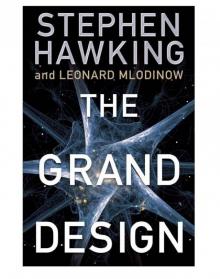 The Grand Design
The Grand Design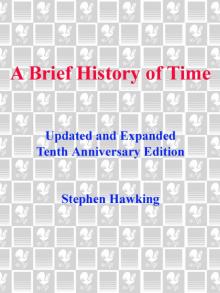 A Brief History of Time
A Brief History of Time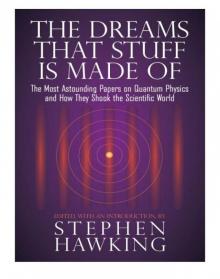 The Dreams That Stuff is Made of
The Dreams That Stuff is Made of My Brief History
My Brief History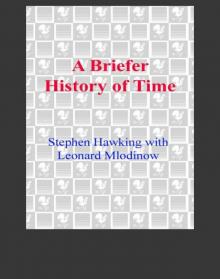 A Briefer History of Time
A Briefer History of Time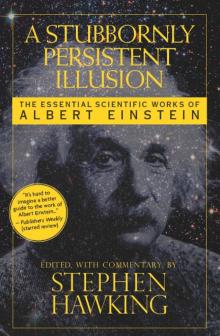 A Stubbornly Persistent Illusion
A Stubbornly Persistent Illusion George and the Blue Moon
George and the Blue Moon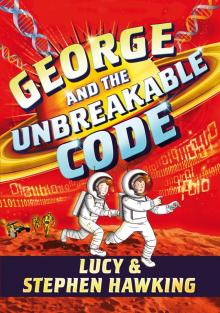 George and the Unbreakable Code
George and the Unbreakable Code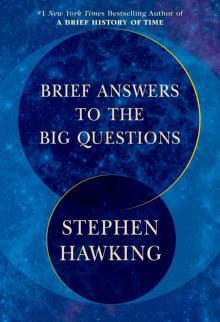 Brief Answers to the Big Questions
Brief Answers to the Big Questions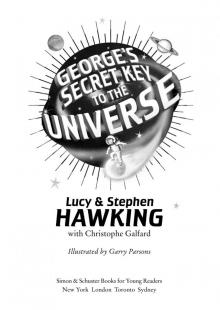 George's Secret Key to the Universe
George's Secret Key to the Universe